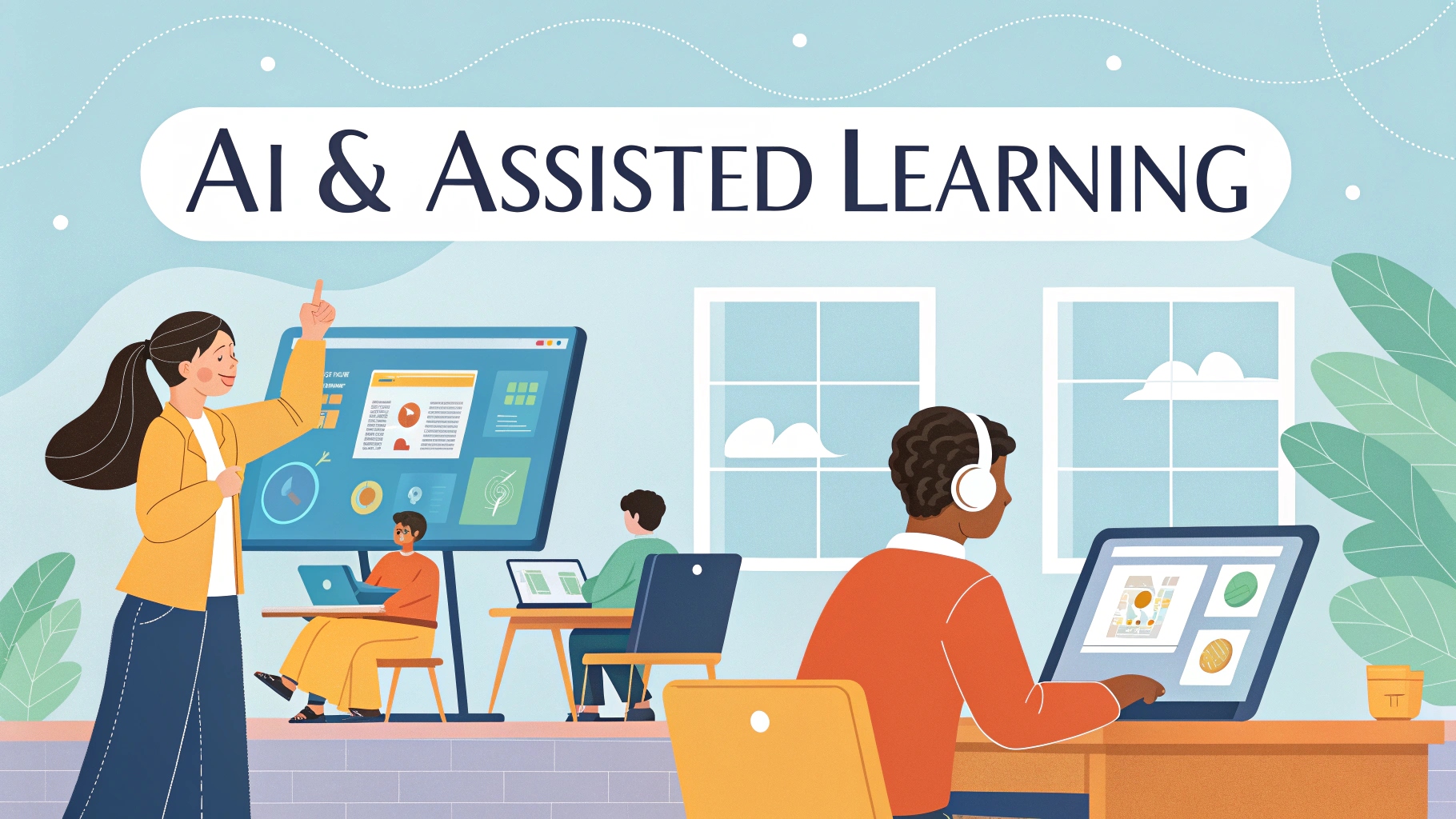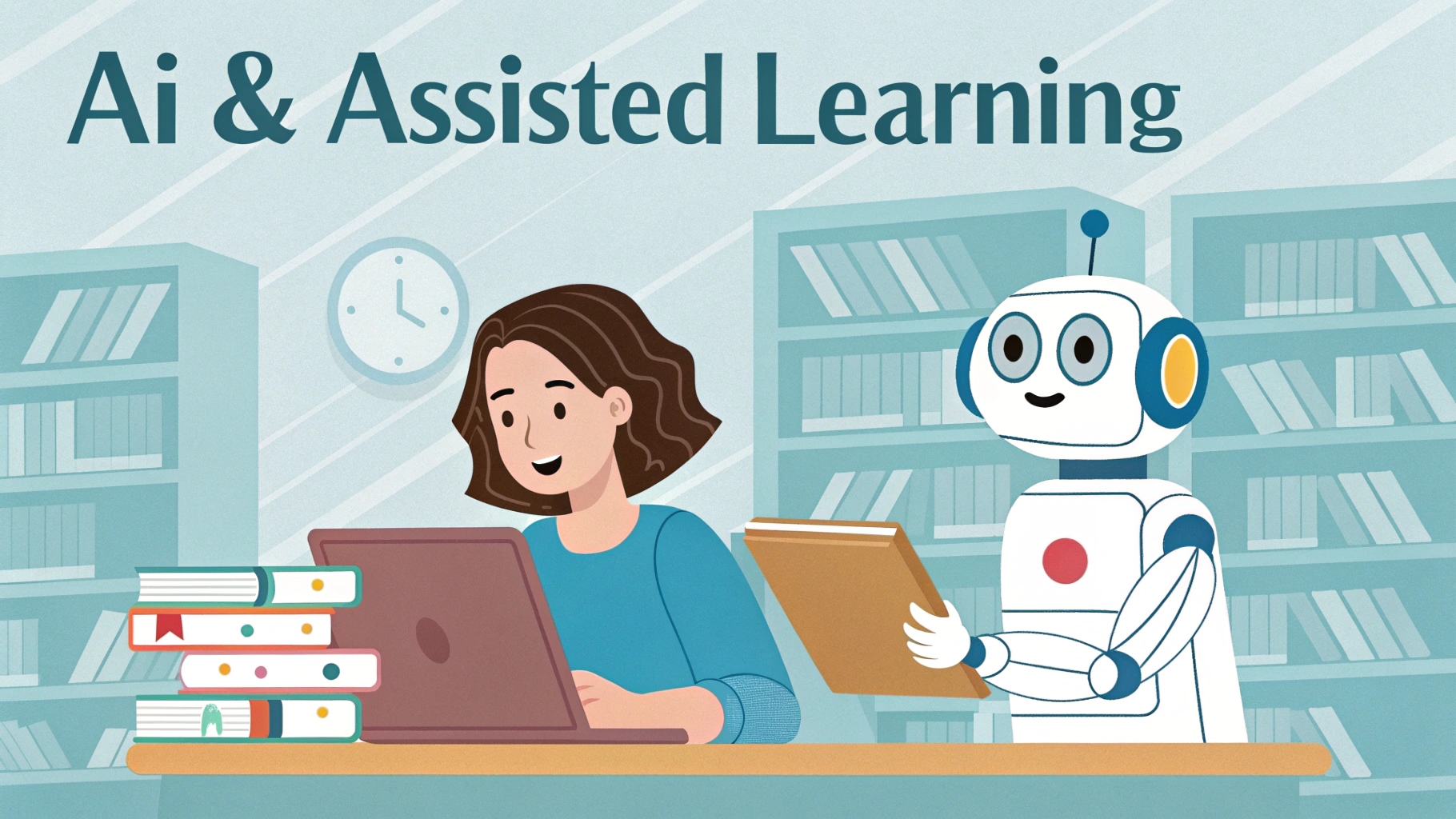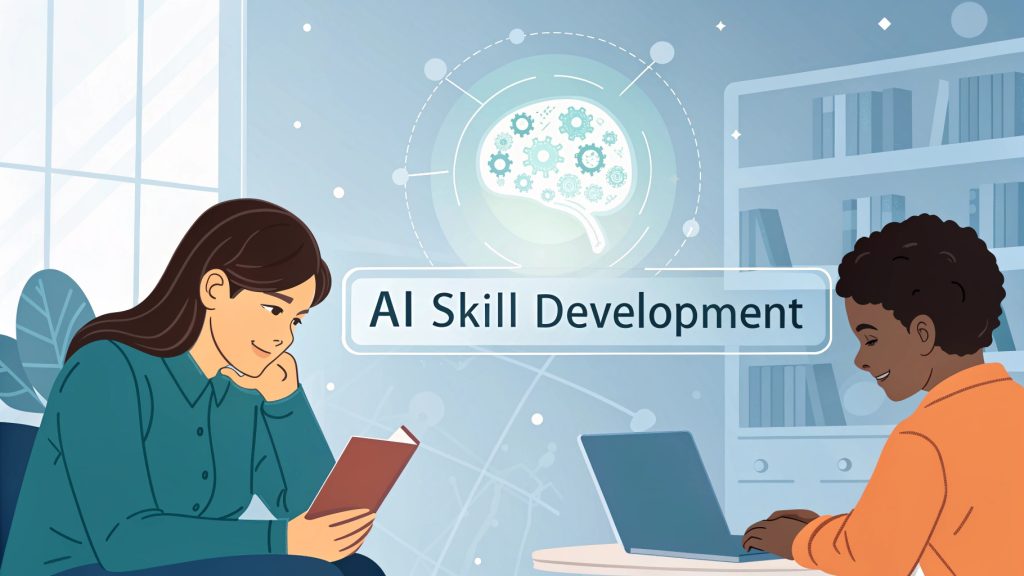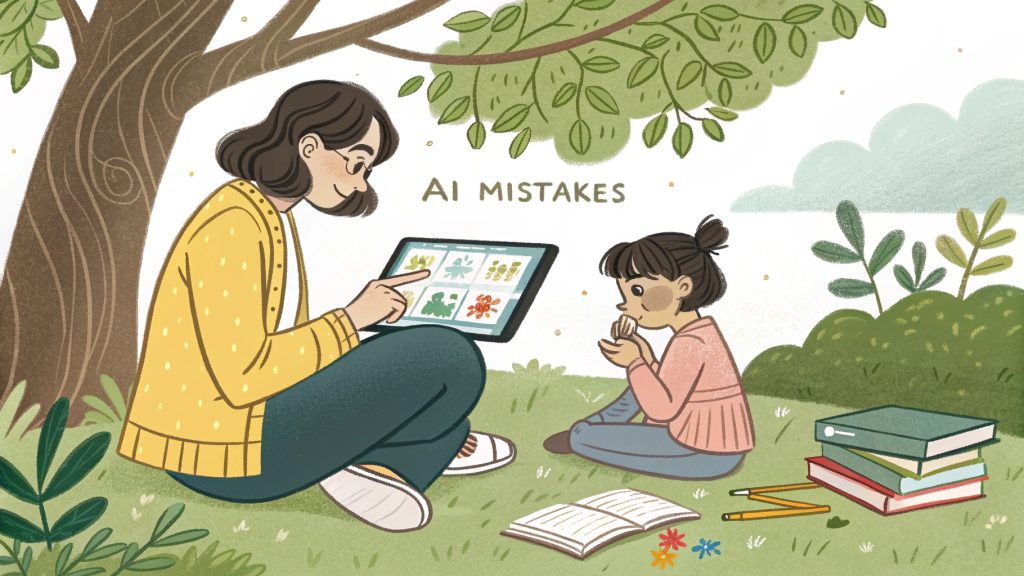
What if AI could become your smartest learning partner? With assisted learning and AI transforming how we study, it’s time to explore tools that personalize, adapt, and supercharge the learning process. This practical guide dives into proven methods, expert tips, and real-world case studies to help you unlock the full potential of AI-powered education. Ready to reimagine learning? Let’s dive in.
What Is assisted learning and how AI enhances it
Ever wonder how AI is reshaping the way we learn? This section breaks down what assisted learning really means and how artificial intelligence is turbocharging it. From real-time support to personalized pathways, discover how this powerful duo is changing education for the better and faster.
Defining assisted learning in modern education
Assisted learning is all about giving students extra help when they need it, without replacing their own efforts. Think of it like having a helpful co-pilot while you’re flying a plane. You’re still the pilot, but someone is guiding you through storms and complex turns.
In schools, assisted learning means using tools, people, or technology to make learning easier and more personalized. This could be a tutor, an educational app, or even a speech-to-text program for students who struggle with writing.
The role of AI in transforming learning experiences
Now, bring AI (Artificial Intelligence) into the picture, and things get exciting. AI can act like a super-smart learning assistant that watches how a student learns and then adapts the lessons just for them.
“AI allows for learning that adapts in real-time to the pace, style, and strengths of each student—something traditional classrooms struggle to provide.” – Dr. Maria Li, Education Technology Expert
With AI, students can get instant feedback, explanations tailored to their understanding level, and learning paths that evolve as they progress. It’s like having a personal coach that never gets tired.
Why traditional learning methods are falling short
Traditional classrooms aren’t keeping up with the pace of today’s learners. In this section, we explore why old-school methods often fail to meet individual needs and how assisted learning powered by AI fills in those critical gaps. Get ready to challenge the status quo.
Common challenges in traditional educational settings
Let’s face it, traditional classrooms try their best, but they face big challenges:
- One-size-fits-all lessons that don’t match everyone’s pace
- Teachers overwhelmed by large class sizes
- Limited time for personal feedback
- Lack of engagement for students who fall behind or get bored
Some students race ahead, others fall behind, and a few stay right on track. But education shouldn’t be a race. Everyone deserves to succeed at their own speed.
The gap between personalized needs and mass education
Imagine if everyone wore the same size shoes. That’s how traditional education treats learners—same pace, same materials, same expectations. But not everyone learns the same way. Some need visuals. Others need hands-on practice. And some just need more time.
That’s where the gap forms. Without flexibility, students either struggle in silence or lose interest altogether. AI in assisted learning helps fill that gap by offering a custom fit, not a standard size.
Core benefits of combining assisted learning and AI
What happens when smart tech meets smart teaching? Magic. This section highlights the biggest benefits of blending assisted learning with AI—from hyper-personalized lessons to instant feedback and improved retention. You’ll see why this combo is the future of education.
personalized learning paths with AI algorithms
AI can track a student’s performance and adjust the difficulty level, type of content, and even the learning format. If a student struggles with fractions, AI might show more visual examples or slow down the pace.
- Helps students learn at their own speed
- Highlights strengths and weaknesses early
- Encourages consistent progress
This kind of personalization can turn frustration into confidence and confusion into clarity.
Improved engagement and retention rates
When students feel seen and supported, they engage more. AI makes learning interactive and fun. Games, challenges, and immediate rewards can turn boring math drills into exciting adventures.
And when students are engaged, they remember more. That’s a big win for everyone.
Real-Time feedback and adaptive assessments
In traditional classrooms, students might wait days or weeks to get test results. AI changes that. It gives feedback immediately, so students know what they did right—or wrong—while it’s still fresh.
“Real-time feedback shortens the learning curve by reinforcing lessons instantly.” – James Boyd, AI Learning Designer
Adaptive assessments even adjust the difficulty level as students answer questions, making the test fit the learner—not the other way around.
Use cases : Where assisted learning and AI shine
Where does AI in education work best? Whether it’s in K-12, higher ed, or the corporate world, this section offers real examples of assisted learning in action. Learn how AI is boosting results across age groups, subjects, and industries.
K-12 Classrooms and individualized instruction
In elementary and high schools, AI is helping teachers create lesson plans that match student needs. For example, reading apps powered by AI can assess pronunciation, fluency, and comprehension while suggesting the next best activity.
Teachers get a dashboard showing who’s struggling and why, so they can step in early.
Higher education and research assistance
College students deal with complex research, time management, and a lot of pressure. AI tools help by summarizing academic articles, organizing notes, and even suggesting study schedules.
Some universities now use AI writing assistants to help students brainstorm and organize essays more effectively.
Corporate training and skill development programs
Businesses use AI to train employees faster and more efficiently. New hires can complete onboarding using AI-guided modules. Sales teams can simulate client meetings with AI chatbots. It’s like having a coach in your pocket.
| Use cases | AI tool examples | Benefits |
|---|---|---|
| K-12 Learning | AI reading assistants | Improved literacy, real-time feedback |
| Higher Education | AI research summarizers | Faster comprehension, better writing support |
| Corporate Training | AI onboarding platforms | Self-paced learning, reduced trainer workload |
Most common problems in AI-Assisted learning today
AI in education isn’t flawless yet. In this section, we unpack the real challenges facing AI-assisted learning, from privacy risks to technical barriers and social concerns. Knowing the limits helps you use the tools more wisely and effectively.
Data privacy and ethical concerns in AI tools
AI tools need data, lots of it. But with that comes responsibility. Parents, schools, and companies worry: *Who sees this data?* *Is it safe?*
Some AI platforms collect user behavior, voice recordings, or personal preferences. If not handled properly, that information could be misused.
“When AI is used in education, privacy should not be an afterthought—it should be the foundation.” – Priya Menon, Data Ethics Advocate

Technical barriers for students and educators
Not all schools or families have access to the latest technology or high-speed internet. Even when they do, teachers might not feel confident using complex AI platforms.
- Lack of training for teachers
- Inconsistent internet access
- Cost of upgrading systems
These barriers can widen the learning gap instead of closing it.
Overreliance on automation and reduced human interaction
AI is powerful, but it’s not human. Overusing it can lead to problems. Imagine a classroom with no teacher, only machines. Students might get answers, but miss out on empathy, motivation, and social learning.
AI should *support* learning, not replace the human connection that makes it meaningful.
Proven strategies to maximize AI-Assisted learning
Want to unlock the full power of AI in your learning journey? This section offers actionable strategies to do just that, from choosing the right platforms to mixing AI with expert guidance. Practical, proven, and ready to implement.
Choosing the right AI-Powered learning platform
There are dozens of AI learning tools out there, but not all of them are created equal. Some focus on specific subjects, like math or languages. Others are all-in-one learning systems. So how do you choose?
Here’s a checklist to help:
- Does it adapt to individual learning levels?
- Is it user-friendly for both students and educators?
- Does it offer detailed feedback and progress tracking?
- Are there built-in safety and privacy measures?
Start by identifying the learner’s goals, then match them with a platform’s core strengths.
Blending human guidance with AI-Driven insights
AI is a great assistant, but humans still play the lead role in learning. The best approach is a blend of both, like a duet where AI handles the routine tasks and the teacher or mentor brings empathy and experience.
“AI helps teachers teach smarter, not harder. It’s not about replacing them—it’s about empowering them.” – Sarah Trent, Learning Consultant
A teacher, parent, or tutor should still guide discussions, answer nuanced questions, and give emotional support. AI provides the data, but humans provide the context.
Setting clear goals and measuring learning progress
AI tools shine when they’re focused. Before starting, set specific, measurable goals:
- “Improve reading level by 2 grades in 6 months”
- “Complete 20 math problem sets with 90% accuracy”
- “Watch 10 history videos and score above 80% on quizzes”
Most platforms come with dashboards to track this progress. Celebrate milestones to keep learners motivated!
Expert tips for educators using AI for assisted learning
AI works best when teachers know how to use it. This section shares expert advice on training, planning, and building a curriculum that benefits from artificial intelligence without losing the human touch. Perfect for educators ready to evolve.
How to train teachers on AI integration
Teachers are central to assisted learning. But handing them an AI tool without training is like giving a pilot a jet without a manual.
Here’s a simple 3-step training flow:
- Intro Workshops: Understand the tool’s purpose and how it supports teaching goals.
- Hands-On Practice: Run trial sessions with student simulations.
- Ongoing Support: Regular updates, Q&A sessions, and peer feedback groups.
When teachers feel confident, they can focus more on teaching and less on troubleshooting.
Creating Curriculum that leverages AI capabilities
AI should not be tacked on as an afterthought, it should be built into the learning journey.
Try these approaches:
- Use AI to pre-assess knowledge before a new unit
- Assign interactive AI-based exercises between traditional lessons
- Use AI-generated analytics to tailor review sessions
When AI becomes part of the plan, students benefit from a smarter and more responsive curriculum.
Case studies : Successful applications of AI in assisted learning
Still skeptical about AI in education? These real-world case studies show just how effective it can be, from public schools to universities and corporate teams. Get inspired by success stories that prove AI-assisted learning really works.
Case study 1 : Personalized math learning in public schools
In a U.S. district with low math scores, schools introduced an AI-powered math platform. It adjusted question difficulty in real time, provided animated feedback, and sent weekly reports to teachers.
After 4 months:
| Metric | Before AI | After AI |
|---|---|---|
| Average Math Score | 62% | 78% |
| Student Engagement | Low | High |
| Homework Completion | 57% | 91% |
Case study 2 : AI-Powered language learning in universities
A European university adopted an AI-driven platform for students learning French. It provided pronunciation correction, vocabulary games, and cultural context modules.
Students reported feeling less embarrassed speaking French, and professors noted significant improvements in spoken fluency by the end of the term.
Case study 3 : Upskilling employees in a Tech enterprise
A global tech company needed to train 500+ employees on cybersecurity practices. Traditional workshops were too slow. So, they implemented an AI learning system that adapted based on each employee’s role.
“Within weeks, our employees had completed training that used to take months. AI helped us move faster, smarter, and with better retention.” – Raj Verma, Corporate Learning Director
Future trends in assisted learning and AI
What’s next for AI in learning? This section explores exciting trends like emotion-aware AI and predictive learning tools. The future of education is smart, responsive, and just around the corner. Here’s what to expect and how to get ready.
Predictive learning and Emotion-Aware AI
Imagine if your learning assistant could sense when you’re getting frustrated and slow things down or when you’re breezing through and speed things up. That’s where emotion-aware AI comes in.
It uses voice tone, facial expressions, or typing speed to adjust teaching style in real time. It’s like having a teacher who reads your mood.
Predictive learning is another breakthrough. AI can guess what a student might struggle with next based on past data and prepare resources in advance.
The rise of AI tutors and virtual coaches
AI tutors are becoming more advanced. They can answer follow-up questions, offer examples, and even remind students to take breaks. Some are voice-based, acting like friendly study buddies.
In the future, students may have their own AI mentor, like a digital Gandalf, guiding them through their academic journey.
How to get started with assisted learning and AI
Ready to dive in? Whether you’re a teacher, parent, or self-learner, this section will guide you through starting your AI-assisted learning journey. From choosing tools to setting goals, we’ll help you build a strong foundation from day one.
Evaluating your learning goals and needs
Before diving into the sea of AI tools, ask: What’s the goal?
- Boost grades?
- Build confidence?
- Learn at your own pace?
Knowing the “why” helps you choose the right “how.”
Recommended tools and platforms for beginners
Here are a few beginner-friendly options:
| Platforms | Best for | Free version? |
|---|---|---|
| Khan Academy | General subjects (K-12) | Yes |
| Duolingo | Language learning | Yes |
| Quizizz | Gamified quizzes | Yes |
| Google’s Read Along | Reading fluency | Yes |
Budgeting and implementation considerations
Not all AI tools are free. For schools or families planning ahead, here’s what to consider:
- Licensing: Monthly or yearly costs per student
- Hardware: Devices or internet connections needed
- Training: Teacher support or tutorials included?
Some companies offer trial periods or discounts for educational use, always ask.
Assisted learning and AI aren’t just buzzwords, they’re reshaping how students and educators experience education. By choosing the right tools, setting clear goals, and blending human guidance with smart tech, anyone can master this new approach. Want to boost your learning or teaching journey? Start small, stay curious, and explore more of our content to go even deeper.


